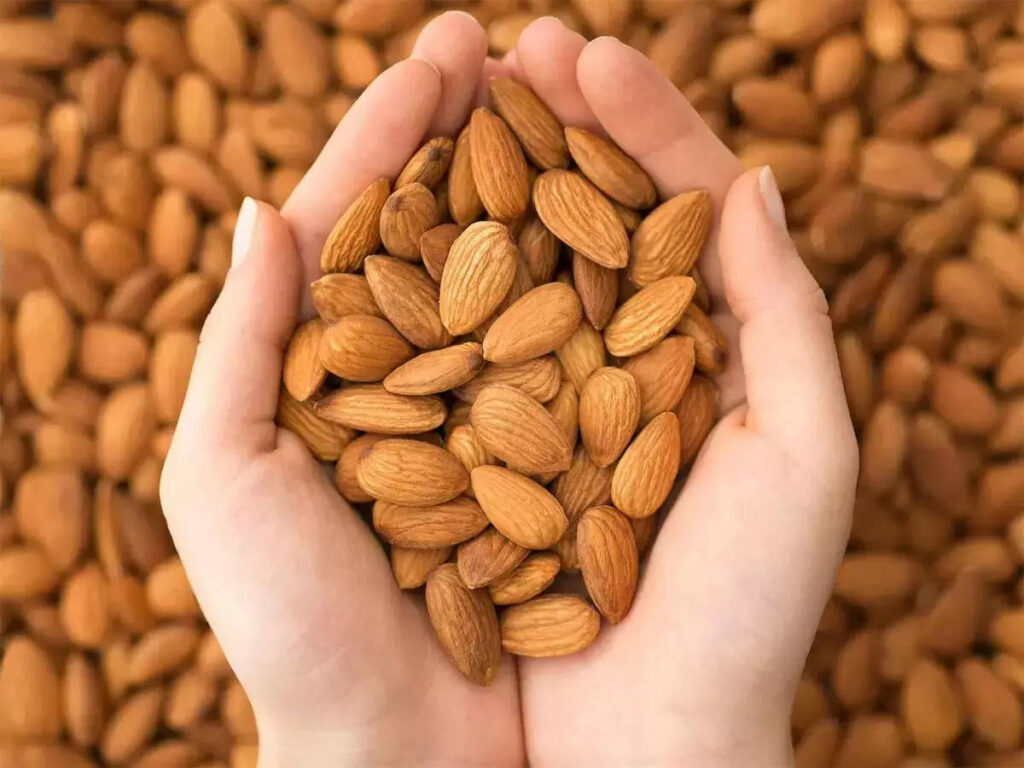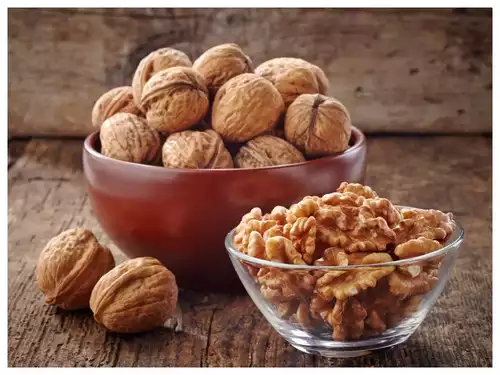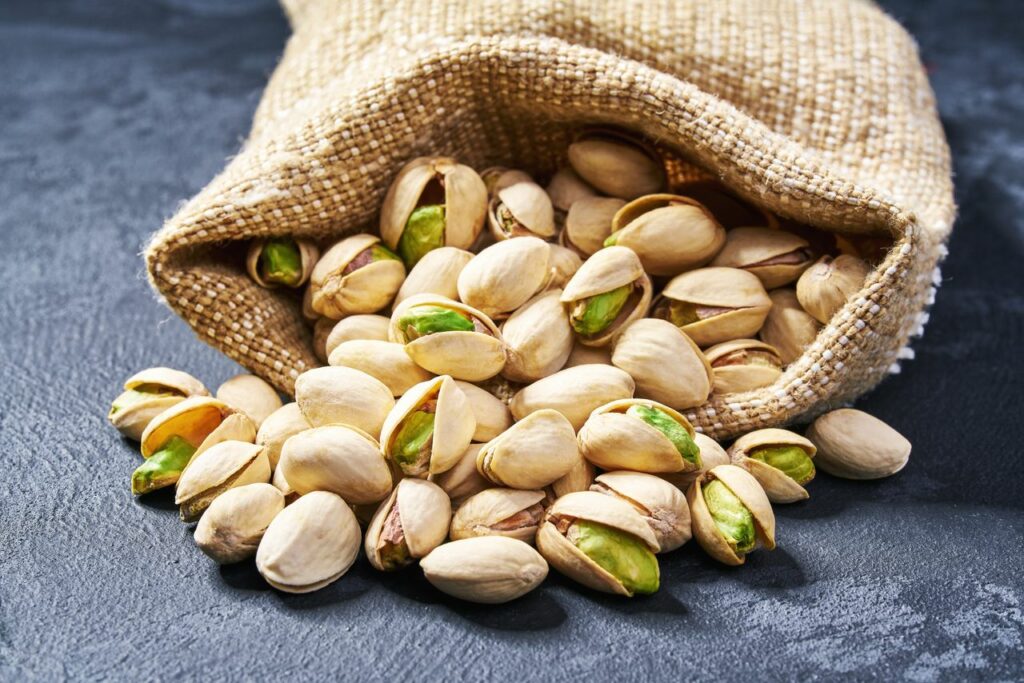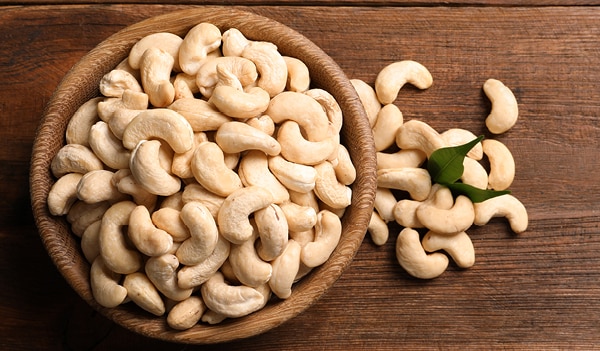Nuts make a delicious, protein-rich snack or addition to meals.
They’re versatile, easy to eat on the go, and a good source of plant-based protein, especially for those who eat few or no animal products.
Eating nuts can help you meet your needs for protein, which is necessary for building bones, muscles, and skin. Protein also increases feelings of fullness, helping you stay satisfied and energised
High protein nuts are a good choice of snacks, especially for individuals who follow a high-protein, high-fat diet. Additionally, high protein nuts are usually better to snack on when you’re craving food rather than having a snack with low nutritional value but high calories.
High protein nuts and seeds include hemp seeds, pumpkin seeds, peanuts, almonds, pistachios, sunflower seeds, flax seeds, sesame seeds, chia seeds, cashews, and more. Below is a list of 16 nuts and seeds high in protein.
Examples of high protein nuts
Here are the names of the nuts with the most protein along with their protein value for ¼ cup.
- Peanuts – 7g of protein
- Almonds – 6g of protein
- Pistachios – 6g of protein
- Walnuts – 4g of protein
- Hazelnuts – 4g of protein
- Macadamia Nuts – 2g of protein
You must keep in mind that nuts, while having a high protein value, are high in fats as well Hence, it’s extremely important to keep the serving size in mind. Otherwise, you may end up going beyond your daily calories.
Almonds

Protein: 7 grams per 1/4-cup
Almonds are actually a seed. However, people often group them with nuts and consider them to be a high protein option.
In addition to being high in protein, almonds are loaded with antioxidants. These plant compounds protect the body from free-radical-induced oxidative stress, which can lead to aging, heart disease, and some cancers
Walnuts

Protein: 4.5 grams per 1/4-cup (29-gram) serving of chopped walnuts
Eating walnuts is a delicious way to boost your protein intake.
Walnuts are also a source of heart-healthy fats. Specifically, they contain more omega-3 fatty acids, in the form of alpha-linolenic acid (ALA), than any other nut.
Pistachios

Protein: 6 grams per 1/4-cup (30-gram)
With 6 grams of protein per 1/4 cup (30 grams), pistachios contain as much protein as an egg per serving, plus a high amount of essential amino acids.
Cashews

Protein: 5 grams per 1/4 cup (32 grams)
Cashews contain 5 grams of protein per 1/4-cup (32-gram) serving. Along with protein, cashews contain essential micronutrients like copper.
Benefits of consuming high protein nuts
As the name suggests, high protein nuts provide you with one of the three macronutrients – protein. However, consuming nuts is beneficial in more ways than one.
Here are some of the benefits of consuming nuts that you should be aware of.
Heart health
Nuts have high levels of polyunsaturated and monounsaturated fats. These two types of fats (unsaturated fats) can help with reducing cholesterol levels while lowering the risk of heart disease.
Better digestion
Nuts have a high fiber content that helps with improving digestion and preventing constipation.
Stronger bones
Strong and healthy bones require various types of minerals such as calcium and magnesium. High protein nuts are rich in such minerals and help in bone strengthening as well.
Reduced inflammation
High protein nuts have anti-inflammatory compounds and help in reducing inflammation throughout the body.
Improved brain functions
Some nuts are high in vitamin E, omega-3 fatty acids, and magnesium. These minerals and vitamins are extremely important for brain health.
Weight management
High protein nuts are a good source of fiber and healthy fats as well. Therefore, switching out snacks with low nutritional value and high calories can help with overall weight management.
Nevertheless, even with the benefits of high-protein nuts, you should always consume nuts in moderation.
How are nuts made?
The process of making nuts is by using the seeds of various shrubs and trees. There are certain steps to be followed to ensure the nuts are packed to perfection.
Step 1: Pollination
Winds, insects, and manual efforts are put into pollinating the flowers of trees that have nut-bearing capabilities.
Step 2: fruit development
Pollination leads to pollinated flowers that transform into fruits. These fruits have a hard outer shell and the nut sits inside this shell.
Step 3: harvesting
When the fruit falls from the tree, it is harvested using manual efforts.
Step 4: processing
Once the outer shells are removed, the nuts inside can be salted, roasted, or even put through further processing to turn the nuts into oil or butter.
All nuts have different protein and fat content, so it’s best to know the nutritional value of the same before adding them to your daily diet.
Now, the basic steps of making nuts remain the same, but others can be put through further processing to create specific varieties of nuts.
